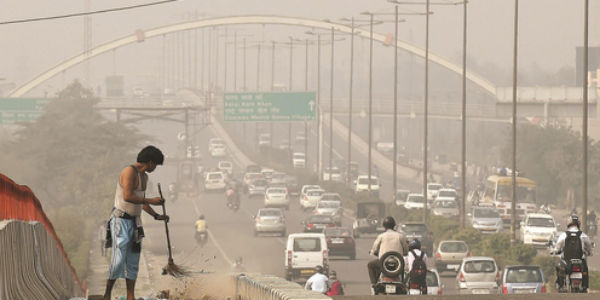
Hot and humid weather is distressing the residents of Delhi and its adjoining regions of Noida, Gurugram, Faridabad and Ghaziabad. Though the summer sky doesn’t look smoggy, the air continues to be polluted over the region.
According to recent research, there was a noteworthy ozone (03) build up during the months of April and May. Adding to the woes is that this summer, the safe standard was violated on 64% of days as opposed to 50% of days in the same period last year.
Sources of this hazardous gas are industrial facilities, motor vehicle exhausts, power plants and others. Just a couple of hours of exposure to O3 can result in severe asthma attacks and other health problems. Ozone deteriorates symptoms of asthma, leading to lung function impairment and also damages lung tissues. It can even worsen heart disease, bronchitis and emphysema.
Moreover, O3 concentration also intensifies with high temperatures and solar radiation. Like this year, in April, the temperature mounted to 32°C on April 14 from 27°C on April 9; this made the daytime ozone levels to surge by 134%. In the same way, in May when the temperature rose from 32°C on May 3 to 36°C on May 8, the daytime ozone concentration augmented to 130%.
Keeping this in view, researchers have suggested Delhi-NCR to implement a long term action plan that addresses each source of pollution as directed by the Supreme Court. Further, they recommended timely implementation of BS VI standards, discouraging diesel vehicles and scaling up public transport rapidly.
Image Credit: wikipedia
Any information taken from here should be credited to skymetweather.com


